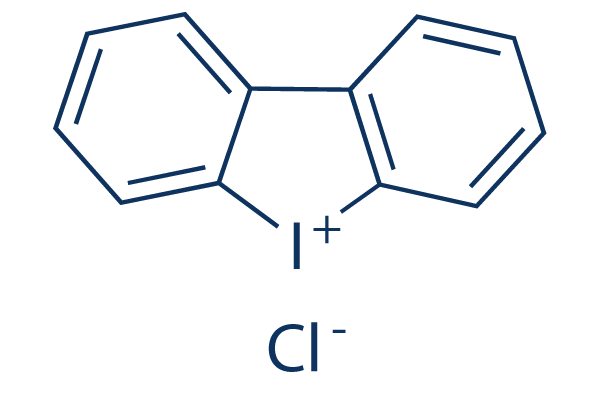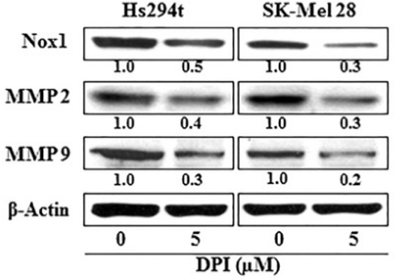
- Bioactive Compounds
- By Signaling Pathways
- PI3K/Akt/mTOR
- Epigenetics
- Methylation
- Immunology & Inflammation
- Protein Tyrosine Kinase
- Angiogenesis
- Apoptosis
- Autophagy
- ER stress & UPR
- JAK/STAT
- MAPK
- Cytoskeletal Signaling
- Cell Cycle
- TGF-beta/Smad
- Compound Libraries
- Popular Compound Libraries
- Customize Library
- Clinical and FDA-approved Related
- Bioactive Compound Libraries
- Inhibitor Related
- Natural Product Related
- Metabolism Related
- Cell Death Related
- By Signaling Pathway
- By Disease
- Anti-infection and Antiviral Related
- Neuronal and Immunology Related
- Fragment and Covalent Related
- FDA-approved Drug Library
- FDA-approved & Passed Phase I Drug Library
- Preclinical/Clinical Compound Library
- Bioactive Compound Library-I
- Bioactive Compound Library-Ⅱ
- Kinase Inhibitor Library
- Express-Pick Library
- Natural Product Library
- Human Endogenous Metabolite Compound Library
- Alkaloid Compound LibraryNew
- Angiogenesis Related compound Library
- Anti-Aging Compound Library
- Anti-alzheimer Disease Compound Library
- Antibiotics compound Library
- Anti-cancer Compound Library
- Anti-cancer Compound Library-Ⅱ
- Anti-cancer Metabolism Compound Library
- Anti-Cardiovascular Disease Compound Library
- Anti-diabetic Compound Library
- Anti-infection Compound Library
- Antioxidant Compound Library
- Anti-parasitic Compound Library
- Antiviral Compound Library
- Apoptosis Compound Library
- Autophagy Compound Library
- Calcium Channel Blocker LibraryNew
- Cambridge Cancer Compound Library
- Carbohydrate Metabolism Compound LibraryNew
- Cell Cycle compound library
- CNS-Penetrant Compound Library
- Covalent Inhibitor Library
- Cytokine Inhibitor LibraryNew
- Cytoskeletal Signaling Pathway Compound Library
- DNA Damage/DNA Repair compound Library
- Drug-like Compound Library
- Endoplasmic Reticulum Stress Compound Library
- Epigenetics Compound Library
- Exosome Secretion Related Compound LibraryNew
- FDA-approved Anticancer Drug LibraryNew
- Ferroptosis Compound Library
- Flavonoid Compound Library
- Fragment Library
- Glutamine Metabolism Compound Library
- Glycolysis Compound Library
- GPCR Compound Library
- Gut Microbial Metabolite Library
- HIF-1 Signaling Pathway Compound Library
- Highly Selective Inhibitor Library
- Histone modification compound library
- HTS Library for Drug Discovery
- Human Hormone Related Compound LibraryNew
- Human Transcription Factor Compound LibraryNew
- Immunology/Inflammation Compound Library
- Inhibitor Library
- Ion Channel Ligand Library
- JAK/STAT compound library
- Lipid Metabolism Compound LibraryNew
- Macrocyclic Compound Library
- MAPK Inhibitor Library
- Medicine Food Homology Compound Library
- Metabolism Compound Library
- Methylation Compound Library
- Mouse Metabolite Compound LibraryNew
- Natural Organic Compound Library
- Neuronal Signaling Compound Library
- NF-κB Signaling Compound Library
- Nucleoside Analogue Library
- Obesity Compound Library
- Oxidative Stress Compound LibraryNew
- Plant Extract Library
- Phenotypic Screening Library
- PI3K/Akt Inhibitor Library
- Protease Inhibitor Library
- Protein-protein Interaction Inhibitor Library
- Pyroptosis Compound Library
- Small Molecule Immuno-Oncology Compound Library
- Mitochondria-Targeted Compound LibraryNew
- Stem Cell Differentiation Compound LibraryNew
- Stem Cell Signaling Compound Library
- Natural Phenol Compound LibraryNew
- Natural Terpenoid Compound LibraryNew
- TGF-beta/Smad compound library
- Traditional Chinese Medicine Library
- Tyrosine Kinase Inhibitor Library
- Ubiquitination Compound Library
-
Cherry Picking
You can personalize your library with chemicals from within Selleck's inventory. Build the right library for your research endeavors by choosing from compounds in all of our available libraries.
Please contact us at [email protected] to customize your library.
You could select:
- Antibodies
- Bioreagents
- qPCR
- 2x SYBR Green qPCR Master Mix
- 2x SYBR Green qPCR Master Mix(Low ROX)
- 2x SYBR Green qPCR Master Mix(High ROX)
- Protein Assay
- Protein A/G Magnetic Beads for IP
- Anti-Flag magnetic beads
- Anti-Flag Affinity Gel
- Anti-Myc magnetic beads
- Anti-HA magnetic beads
- Poly FLAG Peptide lyophilized powder
- Protease Inhibitor Cocktail
- Protease Inhibitor Cocktail (EDTA-Free, 100X in DMSO)
- Phosphatase Inhibitor Cocktail (2 Tubes, 100X)
- Cell Biology
- Cell Counting Kit-8 (CCK-8)
- Animal Experiment
- Mouse Direct PCR Kit (For Genotyping)
- New Products
- Contact Us
DPI (Diphenyleneiodonium chloride)
DPI (Diphenyleneiodonium chloride) is an inhibitor of NADPH oxidase and also a potent, irreversible, and time-, temperature-dependent iNOS/eNOS inhibitor. Diphenyleneiodonium chloride (DPI) also functions as a TRPA1 activator and selectively inhibits intracellular reactive oxygen species (ROS).

DPI (Diphenyleneiodonium chloride) Chemical Structure
CAS: 4673-26-1
Selleck's DPI (Diphenyleneiodonium chloride) has been cited by 41 publications
Purity & Quality Control
Batch:
Purity:
99.69%
99.69
DPI (Diphenyleneiodonium chloride) Related Products
| Related Targets | NOX1 NOX4 NOX2 | Click to Expand |
|---|---|---|
| Related Products | Setanaxib (GKT137831) VAS2870 GSK2795039 GLX351322 2-Acetylphenothiazine (ML171) | Click to Expand |
| Related Compound Libraries | Kinase Inhibitor Library FDA-approved Drug Library Natural Product Library Bioactive Compound Library-I Bioactive Compound Library-Ⅱ | Click to Expand |
Choose Selective NADPH-oxidase Inhibitors
Cell Data
| Cell Lines | Assay Type | Concentration | Incubation Time | Formulation | Activity Description | PMID |
|---|---|---|---|---|---|---|
| MC3T3-E1 | Function assay | 10 μM | 30 min | block ROS generation and NOX expression | 31049140 | |
| RAW264.7 | Function assay | 10 μM | 4 days | DPI administration inhibited the effect of RANKL on osteoclast differentiation and reduced the number of TRAP-positive multinuclear cells | 30942408 | |
| VSMC | Function assay | 10 μM | 6 h | diminished PDGF-BB-evoked VSMC dedifferentiation, proliferation and migration | 29175753 | |
| HK-2 | Function assay | inhibited ROS generation in the TZA-induced necroptosis | 28894570 | |||
| mouse neural precursor cells | Function assay | Inhibition of neurosphere proliferation of mouse neural precursor cells by MTT assay | 17417631 | |||
| RAW264.7 | Function assay | 1 hr | Inhibition of LPS-stimulated ROS production in mouse RAW264.7 cells preincubated for 1 hr followed by LPS stimulation after 24 hrs by CMH2DCFDA probe-based fluorescence assay | 28384544 | ||
| Click to View More Cell Line Experimental Data | ||||||
Biological Activity
| Description | DPI (Diphenyleneiodonium chloride) is an inhibitor of NADPH oxidase and also a potent, irreversible, and time-, temperature-dependent iNOS/eNOS inhibitor. Diphenyleneiodonium chloride (DPI) also functions as a TRPA1 activator and selectively inhibits intracellular reactive oxygen species (ROS). | |
|---|---|---|
| Targets |
|
| In vitro | ||||
| In vitro | DPI inhibits the activity of NADPH oxidase, nitric oxide synthase, xanthine oxidase and NADPH cytochrome P450 oxidoreductase[4]. Femtomolar concentrations of DPI exert potent anti-inflammatory and neuroprotective effects by inhibiting microglial activation through the inhibition of ERK-regulated PHOX activity[1]. DPI has frequently been used to inhibit ROS production mediated by various flavoenzymes, including NAD(P)H oxidase, quinone oxidoreductase, cytochrome P450 reductase and nitric oxide synthase[2]. NADPH, NADP+, and 2'5'-ADP blocks the inhibitory action of DPI[3]. DPI treatment in ARPE-19 cells evoked a dose- and time-dependent growth inhibition, and also induced DNA fragmentation and protein content of the proapoptotic factor Bax. In addition, DPI significantly induced the expression and phosphorylation of p53, which induces proapoptotic genes in response to DNA damage or irreparable cell cycle arrest. ROS have been implicated as a key factor in the activation of p53 by many chemotherapeutic drugs[4]. |
|||
|---|---|---|---|---|
| Cell Research | Cell lines | ARPE-19 cells | ||
| Concentrations | 0.1, 1, and 10 μM | |||
| Incubation Time | 6, 12, 24, and 48 h | |||
| Method | ARPE-19 cells are plated at 1×106 cells per 60-mm dishes and incubated for 24 h. Cells are cultured in presence or absence of different concentrations of DPI in fresh DMEM/F12 medium supplemented with 10% FBS. After incubation, the cells are trypsinized, washed with phosphate-buffered saline (PBS) and the viable cells were scored by the trypan blue dye exclusion method using a hemocytometer. |
|||
| Experimental Result Images | Methods | Biomarkers | Images | PMID |
| Western blot | Nox1 / MMP2 / MMP9 |

|
26760964 | |
| In Vivo | ||
| In vivo |
Diphenyleneiodonium (DPI), an NADPH oxidase inhibitor, inhibited the production of pro-inflammatory cytokines, (TNF-α and IL-6), reduced macrophage infiltration and classical polarization, and induced the ROS generation. |
|
|---|---|---|
| Animal Research | Animal Models | Male C57BL/6 mice |
| Dosages | 1 mg/kg | |
| Administration | i.p. | |
| NCT Number | Recruitment | Conditions | Sponsor/Collaborators | Start Date | Phases |
|---|---|---|---|---|---|
| NCT06061679 | Not yet recruiting | COPD (Chronic Obstructive Pulmonary Disease) With Acute Lower Respiratory Infection |
Fondazione Policlinico Universitario Agostino Gemelli IRCCS|University of Florence UNIFI University of Florence Florence Italy Florence |
November 2023 | Not Applicable |
| NCT06111664 | Recruiting | Mood Disorders |
University Hospital Strasbourg France |
May 1 2023 | -- |
| NCT05706129 | Recruiting | Clear Cell Renal Cell Cancer (ccRCC)|Pancreatic Ductal Adenocarcinoma (PDAC)|Colorectal Cancer (CRC) |
Debiopharm International SA |
March 14 2023 | Phase 1|Phase 2 |
| NCT05764681 | Not yet recruiting | Cerebral Palsy|Chronic Post Surgical Pain |
Gillette Children''s Specialty Healthcare|National Institutes of Health (NIH)|Eunice Kennedy Shriver National Institute of Child Health and Human Development (NICHD)|University of Minnesota |
March 2023 | -- |
Chemical Information & Solubility
| Molecular Weight | 314.55 | Formula | C12H8I.Cl |
| CAS No. | 4673-26-1 | SDF | Download DPI (Diphenyleneiodonium chloride) SDF |
| Smiles | C1=CC=C2C(=C1)C3=CC=CC=C3[I+]2.[Cl-] | ||
| Storage (From the date of receipt) | |||
|
In vitro |
DMSO : 13 mg/mL ( (41.32 mM); Moisture-absorbing DMSO reduces solubility. Please use fresh DMSO.) Water : Insoluble Ethanol : Insoluble |
Molecular Weight Calculator |
|
In vivo Add solvents to the product individually and in order. |
In vivo Formulation Calculator |
||||
Preparing Stock Solutions
Molarity Calculator
In vivo Formulation Calculator (Clear solution)
Step 1: Enter information below (Recommended: An additional animal making an allowance for loss during the experiment)
mg/kg
g
μL
Step 2: Enter the in vivo formulation (This is only the calculator, not formulation. Please contact us first if there is no in vivo formulation at the solubility Section.)
% DMSO
%
% Tween 80
% ddH2O
%DMSO
%
Calculation results:
Working concentration: mg/ml;
Method for preparing DMSO master liquid: mg drug pre-dissolved in μL DMSO ( Master liquid concentration mg/mL, Please contact us first if the concentration exceeds the DMSO solubility of the batch of drug. )
Method for preparing in vivo formulation: Take μL DMSO master liquid, next addμL PEG300, mix and clarify, next addμL Tween 80, mix and clarify, next add μL ddH2O, mix and clarify.
Method for preparing in vivo formulation: Take μL DMSO master liquid, next add μL Corn oil, mix and clarify.
Note: 1. Please make sure the liquid is clear before adding the next solvent.
2. Be sure to add the solvent(s) in order. You must ensure that the solution obtained, in the previous addition, is a clear solution before proceeding to add the next solvent. Physical methods such
as vortex, ultrasound or hot water bath can be used to aid dissolving.
Tech Support
Answers to questions you may have can be found in the inhibitor handling instructions. Topics include how to prepare stock solutions, how to store inhibitors, and issues that need special attention for cell-based assays and animal experiments.
Tel: +1-832-582-8158 Ext:3
If you have any other enquiries, please leave a message.
* Indicates a Required Field
Tags: buy DPI (Diphenyleneiodonium chloride) | DPI (Diphenyleneiodonium chloride) supplier | purchase DPI (Diphenyleneiodonium chloride) | DPI (Diphenyleneiodonium chloride) cost | DPI (Diphenyleneiodonium chloride) manufacturer | order DPI (Diphenyleneiodonium chloride) | DPI (Diphenyleneiodonium chloride) distributor







































